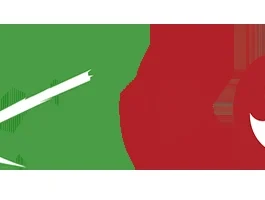Friends, let’s talk about a number.
For a few fleeting moments this week, the price of an ounce of gold flashed across screens worldwide at over $4,000. On the surface, it’s just another market milestone, another headline for the financial news cycle. But I need you to see what I see. This isn't just a price. This is a signal—a powerful, resonant frequency broadcast from the collective subconscious of the global economic system. It's a data point screaming that the trust we place in our established institutions is fraying at an alarming rate.
When I first saw the news, I honestly just sat back in my chair, speechless. Not because of the number itself, but because of what it represents. This isn't a niche asset bubble or a speculative frenzy driven by a hot new algorithm. This is humanity’s oldest, most trusted store of value telling us that the ground beneath our feet is shifting.
What we're witnessing is a classic flight to safety, or what analysts call "safe-haven demand"—in simpler terms, it means when people get scared about the stability of their governments and their paper money, they run to something tangible, something real. And right now, the world is giving them every reason to run.
Think about the inputs to this global equation. The United States government is in a prolonged shutdown, with leaders telling their members to just stay home. Can you imagine a more potent symbol of dysfunction? In Europe, the French government is in turmoil, triggering a sell-off in its markets and currency. Meanwhile, old wars grind on and economic anxieties simmer from Japan to Argentina. It’s a cascading series of failures in the complex systems we’ve built to organize ourselves.
This isn’t just a handful of billionaire hedge fund managers moving digital chess pieces around. The data shows gold-backed ETFs—funds that let ordinary people own a piece of the metal—are swelling. Central banks are reportedly hoarding it. This is a distributed, grassroots movement. It’s a global vote of no-confidence, cast not in a ballot box, but with capital. What does it say about our faith in the future when both individuals and nations are simultaneously reaching for the financial equivalent of a hardened bunker?
The Silver Surge and the Sound Barrier
Now, let's talk about gold's wilder, more volatile sibling: silver. While gold was quietly breaking records, silver was screaming toward a 14-year high, approaching the most mythic number in its modern history: $50 an ounce.

To understand the significance of this, you have to look back. Twice before, in 1980 and again in 2011, silver rocketed toward $50 only to be violently thrown back down, leaving a generation of investors scarred. That price has become a psychological sound barrier, a seemingly unbreakable wall in the collective mind of the market, leading many to ask, Is silver about to crash like in 1980 & 2011? For years, analysts have pointed to it as the ultimate ceiling.
But here’s where we have to stop thinking like traditional analysts and start thinking about the underlying physics of the system. The $50 of 2011 is not the $50 of 2025. That’s the kind of breakthrough that reminds me why I got into this field in the first place—to see past the surface-level data to the deeper truths. When you adjust for the sheer volume of currency that has been pumped into the system, the picture changes completely. The 1980 peak, in today’s dollars, would be closer to $199. The 2011 peak? Around $72.
Today’s price, hovering in the high $40s, isn’t a speculative peak; it’s a launchpad. The amount of money creation we have seen is just staggering—it means the gap between yesterday's value and today's reality is closing faster than we can even comprehend, and assets that can't be printed are the only things that can keep up.
Breaking through $50 won't just be a new all-time high. It will be a paradigm shift. It’s the moment when an entire generation of investors who bought at the last peak are finally made whole. The psychological weight of that moment cannot be overstated. It’s like the four-minute mile; once the barrier is broken, the mental block dissolves, and we realize how much further we can actually go. This is how new eras begin. We could be on the cusp of an explosion of interest from a new generation of investors who aren't burdened by the baggage of the past.
Of course, no ascent is a straight line. The market is showing signs of being "overbought," which likely means we'll see a pause, a consolidation, with some analysts noting modest price pressure on gold, silver amid routine profit taking. This isn't a sign of failure; it's a sign of a healthy, sustainable system building energy for its next major move. It's the rocket boosters detaching before the main engine ignites for the push into orbit.
This brings us to a moment of profound responsibility. Cheering for a high gold price feels strange, because it's fundamentally a bet on instability. It’s a hedge against the failure of the very systems we rely on for a peaceful, prosperous world. While it may be a rational and wise decision for an individual to protect their wealth this way, what does it mean for us, collectively, if everyone is running for the exits at the same time? It forces us to ask a harder question: Instead of just buying a life raft, how do we help fix the ship?
Trust is Being Recalculated
Ultimately, what we are witnessing is the world’s oldest, most decentralized ledger system sending us an immutable signal. Gold and silver are not just commodities; they are a technology for storing trust, perfected over 5,000 years. They don't have a CEO, they can't be diluted by a board vote, and their code cannot be rewritten.
The surge past $4,000 isn't the story. The real story is the silent, global recalculation of trust that is happening beneath the surface. The market is telling us that the current operating system of global finance and politics is full of bugs, and it's starting to revert to the most ancient, reliable protocol it knows. We are living through the Great Re-pricing of everything, and it has nothing to do with money, and everything to do with faith.

